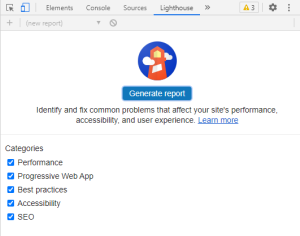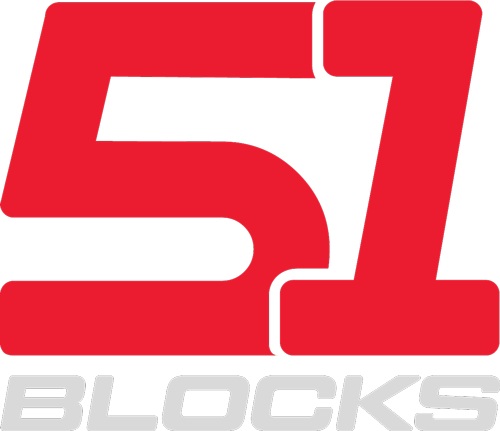A new change impacting website rankings is expected to roll out in May 2021, leaving many users uncertain about its impact on them. The news of this Core Web Vitals update was revealed through a Twitter announcement in November. In this report, Google stated it was designed to help improve the page experience rankings for Google Chrome searches starting in May 2021.
These Core Web Vitals updates will unquestionably change the way we browse. They are projected to make websites more alluring to the users, boosting their user experience on a page. However, many people have questions about how the Core Web Vitals update pertains to them.
In brief, the Core Web Vitals is a checklist of website rules to make browsing on handheld devices more streamlined. This algorithm update involves new grades, directly affecting site rankings.

What Does the Core Web Vitals Report Include?
There are three key concepts that define the core web vitals update in May 2021, including:
- Largest Contentful Paint (LCP)
- First Input Delay (FID)
- Cumulative Layout Shift (CLS)
Compliance with these core web vitals guidelines should help boost a site’s ranked SEO position in Google’s search results.
Largest Contentful Paint (LCP)
A website’s LCP is how easily the web page loads. Ideally, the page should upload on all browsers (such as Google Chrome) as quickly as possible. However, there are a few things that can slow a URL down.
Usually, the most prominent factor is an image or video. An analysis showed that a wait of 2.5 seconds or more for a video or image reduced customer retention, harming the ranking factor and preventing them from wanting to subscribe or return to the platform.
A delay of 2-4 seconds could lead to traffic drops, adversely impacting a site’s ranking signal on the search results list, further confirming that fewer than 2.5 seconds is ideal. Conversely, a good LCP will make your website appear higher on google rankings after May 2021.
First Input Delay (FID)
FID tests the time it takes the browser to respond. It tracks how fast a website responds to your click when you become interactive with it. This is helpful in distinguishing sites that react quickly to visitor actions versus websites with a slower loading speed.
A reduced FID is essential for websites where the customer has to become interactive with it. A shorter response time, ideally less than 100ms, will result in a better experience, improving the ranking factor.
Cumulative Layout Shift (CLS)
This is a user-centered measure of visual stability, as a page’s visual stability is a signal of how often people see unintended layout changes. It examines the viewpoint affected by structural changes and the distance of moving elements. A better score means the ranking factor will increase.
The page’s Cumulative Layout Shift is calculated on a scale of zero to one, directly related in the proportion to the overall screen real estate. For completely static web pages, the scoring can be as low as 0, while the value will increase for dynamic websites.
Google’s Core Web Vitals rating tools use official CLS scores of:
- Good (less than 0.1)
- Needs improvement (from 0.1 to 0.25)
- Poor (greater than 0.25)
To boost your website’s rankings and keep it from getting flagged as “poor” or “needs improvement” on your Core Web Vitals rankings, Google suggests keeping the CLS scoring on your page below 0.1.

Why This Cumulative Layout Shift Matters
These three metrics will be a critical score of the SEO health of your page after May 2021. After analyzing millions of web impressions, Google discovered that visitors were 24% less likely to exit the web before loading resources if certain criteria were met. These insights included the page metric thresholds for the ideal LCP, FID, and CLS.
The Core Web Vitals update, along with the current page experience, will be the determining elements of future Google algorithm updates that determine which web pages will rank high. Metrics such as mobile-friendliness, safe browsing, and HTTP protection would be the distinguishing element for Core Web Vitals.
Google’s goal of using Core Web Vitals as search engine ranking criteria is to assist site owners in building sites with user experience in mind. They want to navigate away from those that only crank out content with minimal regard to being a positive page experience for the customer.
There is also news from the Web Usability Report that reveals that search console results will benefit from the Core Web Vitals update. This will help make sure that the sites are not only compatible with your browser, but also your mobile devices, too.
Google is focusing more on these details of Google Core Web Vitals update, verifying that whenever a user lands on a site — regardless of their platform — they have a positive page experience. Google aims to reward sites that use their resources and analytics and penalize those who don’t, ultimately ranking them lower in the Google search engine.

What Is the Page Experience Update?
Google evaluates a series of cues to see if a person can interpret a particular web page’s perception. They provide signals such as when page loads, web, HTTPS, disruptive interstitials, and content bounces around with page loads.
These are not the most common signals, though. Google’s Core Web Vitals update also plans to add visual resources during the testing process, which they will also release around May 2021. These metrics indicate whether a page fulfills all UX conditions.
Google has modified the page experience update by adding to the previously used page experience signals, too. The development team developing the site largely controls the page experience signals, as it directly affects the Google rankings. This transition to the new Core Web Vitals guidelines should have a profound effect on the Google search results and top stories, allowing users to have a better browsing experience.

A Focus On AMPs
An accelerated mobile page (AMP) is a website that renders pages lightly, reducing the time it takes for them to load. These AMP-specified news pages load fewer data faster, improving the user page experience on these top stories.
Google also rates pages that load faster as the top stories in the search result, meaning you’re more likely to see an AMP version of a website appear when searching for these pages online.
A Streamlined User Experience
Maintaining a good page experience doesn’t have to be impossible. Offering users a well-oiled website, one that has been double-checked on Google’s Search Console to provide great content to its user, should always be the end goal.
Ranking signals are something that Google has implemented over the years. Things like secured (HTTPS website), page speed, content quality, UX, and domain are something that affects ranking signals significantly.
What Can Harm Your Website’s Ranking?
There are a few things you must implement to improve your website’s Google ranking, including:
- Avoiding broken hyperlinks. These are not only terrible for customer experience, but they can also damage your website’s relationship with Google.
- Having HTTPS certification. A secure certification ensures safe browsing, which is a must for every web page.
- Offering mobile-friendliness on your website. Many people prefer to browse from mobile devices. This is helpful for ensuring a good page experience and a faster loading page speed for these users.
- Awareness of Goole PageSpeed Insights. Being mindful of Google’s PageSpeed Insights can help optimize your website’s performance on all devices.
Are You Ready for the Google Core Vitals Update?
Google constantly improves the algorithm for search engines, and this new measure is focused on Cumulative Layout Shift, Largest Contentful Paint, and First Input Delay. These key critical ranking signals test how rapidly your website will appear to its customers and signal an improved UX.
Although high-quality content and a thoughtful SEO strategy should always be a top priority, it’s essential to understand the customer experience to bolster your ranking signal once these changes begin in May 2021. A webpage with good ranking signals will allow more users to subscribe to your website and may even encourage them to sign up for your daily newsletter.
Using data from Google Core Web Vitals report is something you should absolutely welcome. In turn, you can focus on their metrics and signals to ensure the best web experience possible for your page visitors, helping to make sure they continue to come back to you for more news and content in the future.






